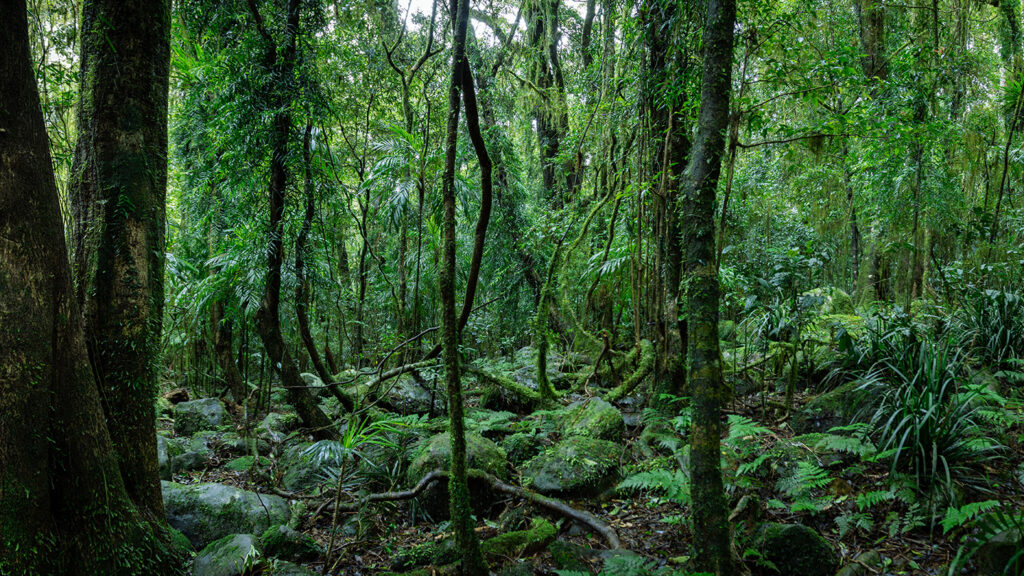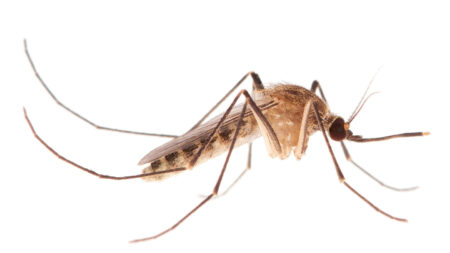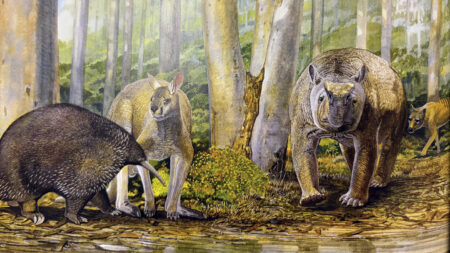Australia’s tropical forests are the world’s first to flip a worrisome switch. The forests are now putting more carbon into the atmosphere than they are taking out, researchers report in the Oct. 16 Nature.
That switch is a clanging alarm bell for the planet’s tropical forests, sounding as world leaders prepare to gather in the heart of the Amazon rainforest to wrangle over how to address the crisis of global climate change. The 30th annual United Nations Climate Change Conference, or COP30, begins November 10 in Belém, Brazil.
The long-term analysis of Australia’s rainforests from 1971 to 2019 revealed that the forests’ woody biomass — its sturdy scaffolding of branches and trunks — has been shrinking since around the year 2000. Tree mortality has soared due to human-caused climate change, including rising temperatures, droughts and damaging tropical cyclones, report ecophysiologist Hannah Carle of Western Sydney University in Australia and colleagues. As a result, the dying trees are adding their carbon back to the atmosphere.
Climate models have previously suggested that additional carbon dioxide in the atmosphere might encourage more plant growth, possibly slowing the decline of forests. But surprisingly, the additional carbon emitted from dead trees didn’t increase growth significantly, the team found. That could be due to limited availability of nutrients plants need for growth, particularly phosphorus, they suggest. If so, nutrient limitation is a factor that needs to be considered when projecting the fate of forests, and how their loss might impact future climate.
“Our finding stresses … that ambitious actions should be taken to slow down climate change, including in relation to protecting tropical forests,” says study coauthor David Bauman, a plant ecologist at the French National Research Institute for Sustainable Development in Marseille. “COP30 will be a crucial moment for these discussions and subsequent actions.”
Researchers hope that COP30 will turn a powerful lens on the fate of tropical forests, particularly the vast Amazon rainforest, which is on the verge of reaching its own tipping point. The Amazon rainforest spans an area nearly as large as the continental United States, and is currently shouldering one-fourth of the carbon dioxide absorption that occurs over land each year (the oceans still take up the lion’s share).
But in 2024, the Amazon experienced its worst-ever drought, and deforestation in the forest currently stands at about 17 percent. Under the compounded pressures of climate change, deforestation, biodiversity loss, water stress and extreme weather, the Amazon could face extensive dieback as soon as 2035, scientists have warned.
The near-term fate of other tropical forests around the world, such as in Africa’s Congo Basin and Southeast Asia, is uncertain — in large part because there is a dearth of long-term monitoring data. But studies have shown that these forests’ ability to store carbon is declining. Southeast Asia’s forest carbon sink is particularly threatened by forest fragmentation, such as from urban sprawl, agricultural development or road construction, researchers reported in 2017. And a 2020 analysis of Africa’s forests suggested that, while they lag behind others in tree loss, they too are beginning to show signs of strain.
“It’s quite alarming. African tropical forests seem to be the last man standing,” says forest ecologist Wannes Hubau of Ghent University in Belgium. Hubau and colleagues found that intact African tropical forests — those that aren’t fragmented or thinned by human activities — began to show signs of increased tree mortality around 2010.
Four years ago, at the COP26 summit in Glasgow, nearly 140 nations signed a declaration to halt and reverse loss of all forested areas, including tropical forests, and land degradation by 2030. But the world is falling far short of its commitment, according to an Oct. 14 report by the U.N. Environment Programme, or UNEP.
Currently, about 291 million of the world‚Äôs 1.6 billion hectares of tropical forest are at high risk of loss ‚Äì and those forests are among the most important to people, providing food, rainfall recycling, pollution filtering and buffering against natural hazards.¬Ý
Protecting these forests will require global financial investments to triple to $300 billion by 2030, and to increase sixfold to $498 billion by 2050, the UNEP report states. Those investments would be toward everything from investing in sustainable agriculture, to developing sustainable supply chains that don’t promote deforestation, to increased regulation and law enforcement.
“The Amazon forest carbon sink is passing a tipping point as we speak,” Hubau says. “It shows that our planet’s natural climate buffers [are starting] to meet their limits.”
All tropical forests need increased protection, even those that are no longer a sink, Hubau says. “They are all huge reservoirs of carbon. The decreasing forest carbon sinks indicate that we must cherish the forest carbon stocks already built up over centuries, or even millennia. Because if we don’t protect them, they’ll be a ‘bomb’ of additional CO2 to the atmosphere.”
Read the full article here














